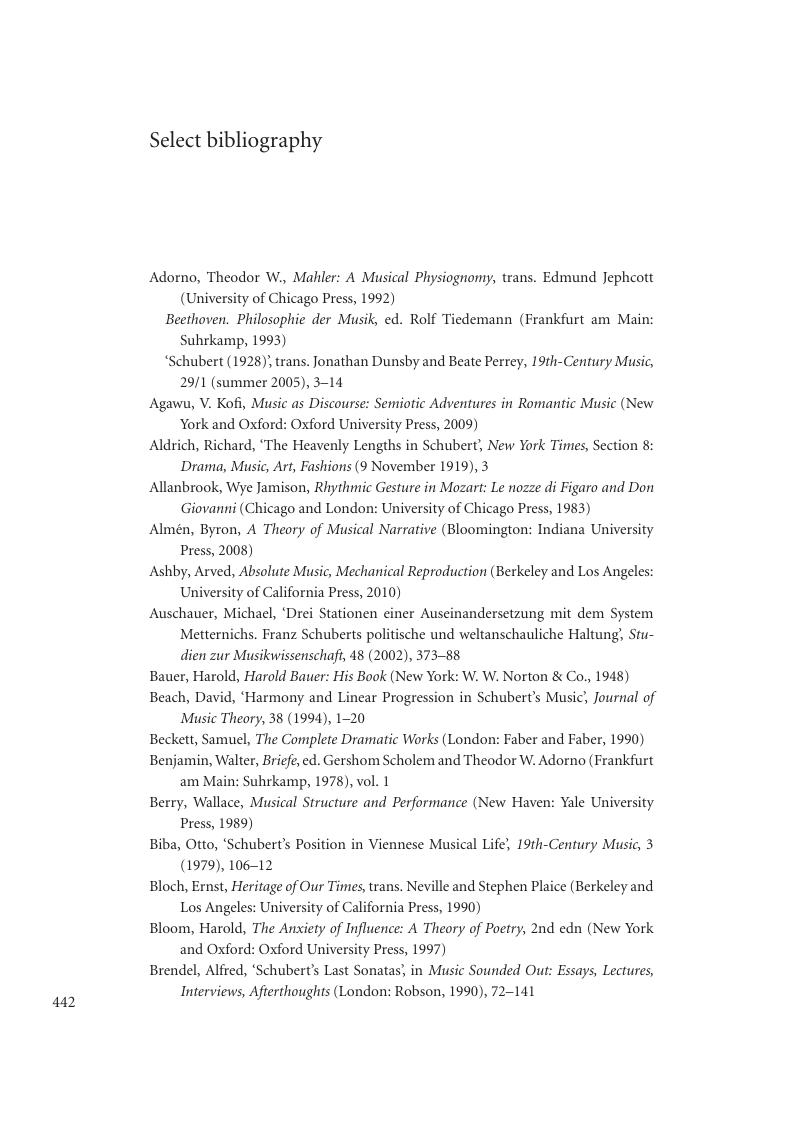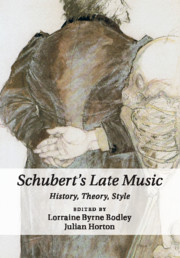Book contents
- Schubert's Late Music
- Schubert's Late Music
- Copyright page
- Dedication
- Contents
- Figures
- Music examples
- Tables
- Contributors
- Book part
- Introduction: Schubert's late style and current musical scholarship
- Part I Reception histories
- Part II The late instrumental music (1): hermeneutics and performance
- Part III The late instrumental music (2): meaning and genre
- Part IV Defining late style
- Select bibliography
- Index
- References
Select bibliography
Published online by Cambridge University Press: 05 April 2016
- Schubert's Late Music
- Schubert's Late Music
- Copyright page
- Dedication
- Contents
- Figures
- Music examples
- Tables
- Contributors
- Book part
- Introduction: Schubert's late style and current musical scholarship
- Part I Reception histories
- Part II The late instrumental music (1): hermeneutics and performance
- Part III The late instrumental music (2): meaning and genre
- Part IV Defining late style
- Select bibliography
- Index
- References
Summary

- Type
- Chapter
- Information
- Schubert's Late MusicHistory, Theory, Style, pp. 442 - 452Publisher: Cambridge University PressPrint publication year: 2016



